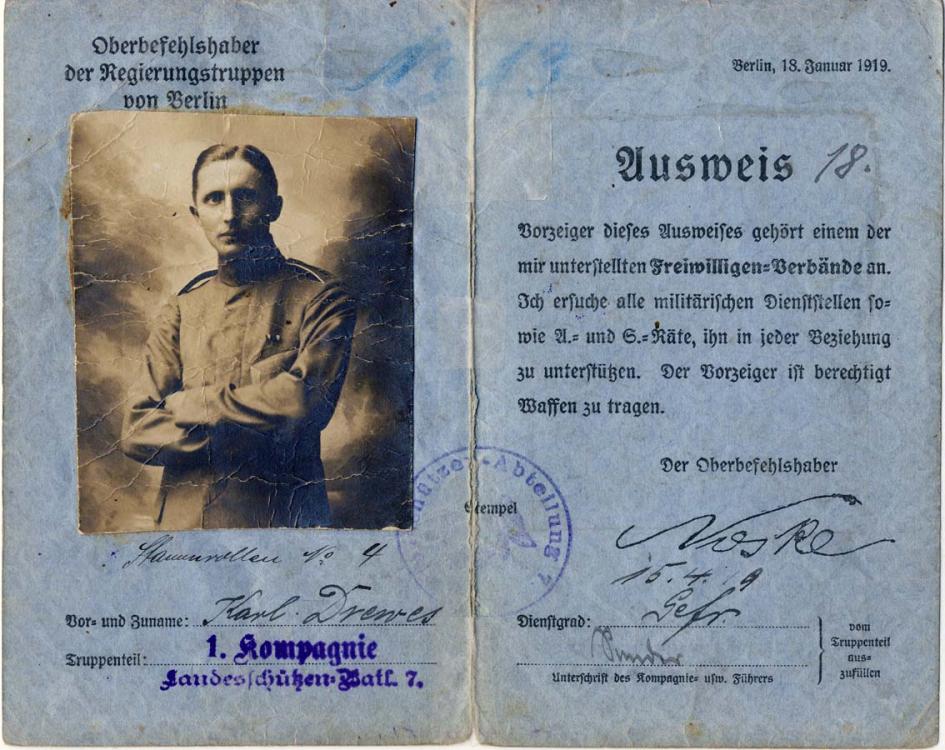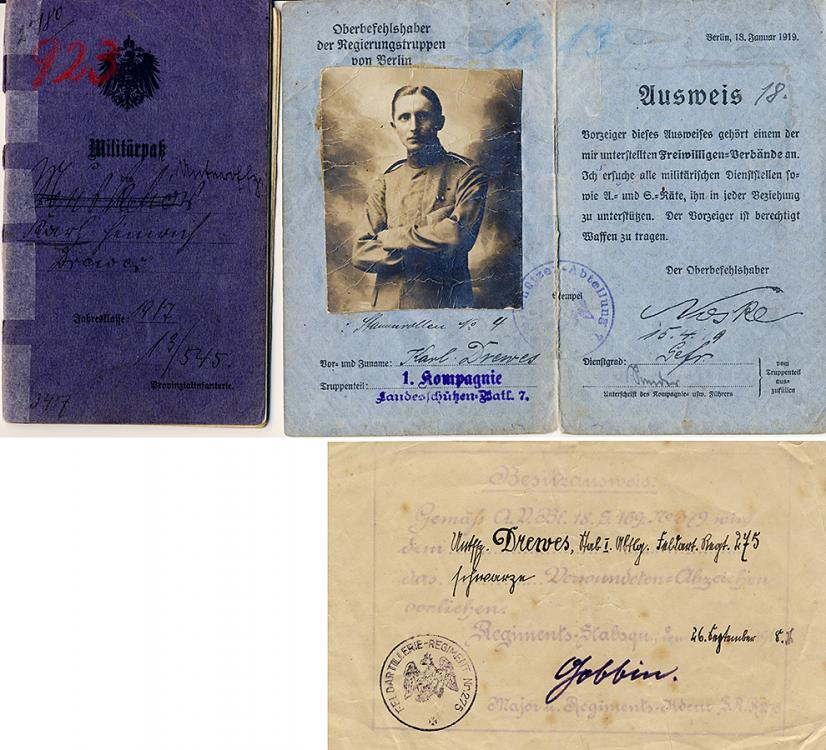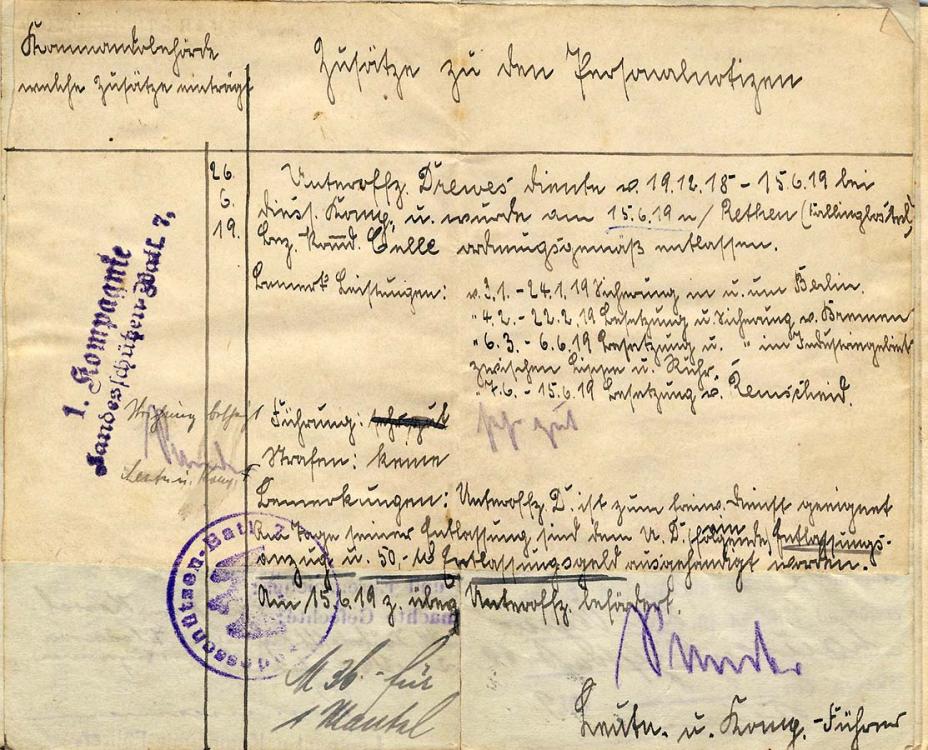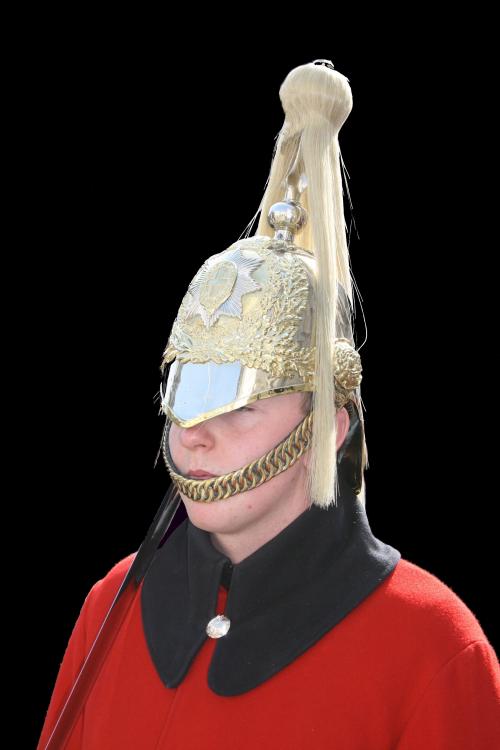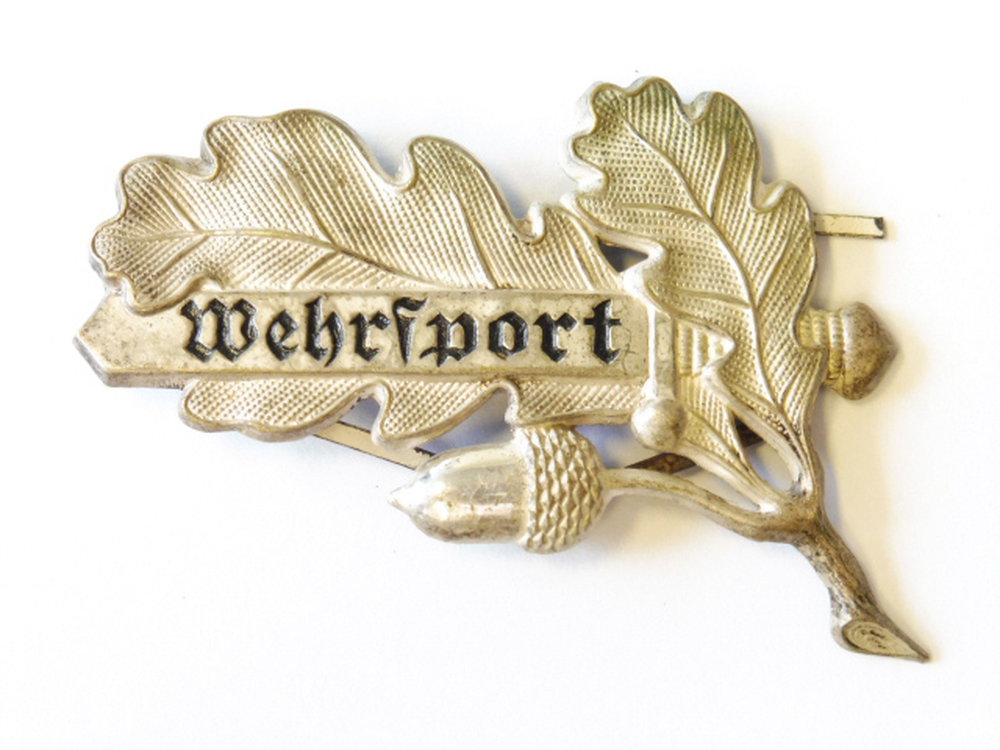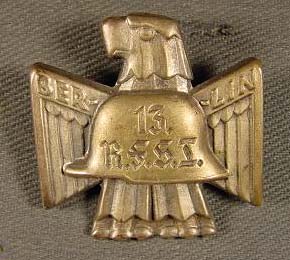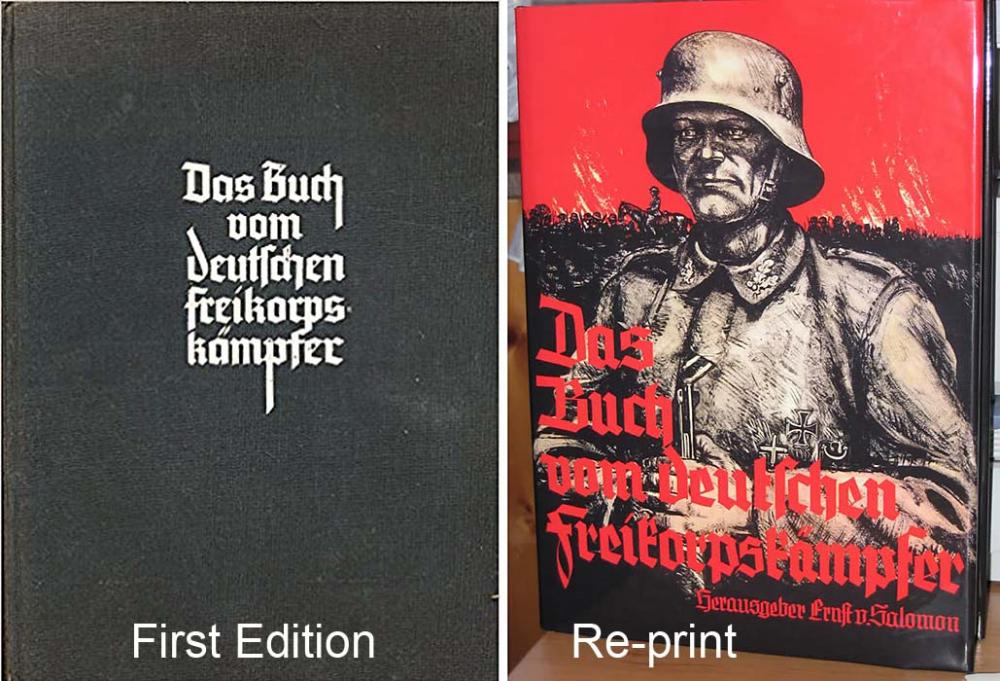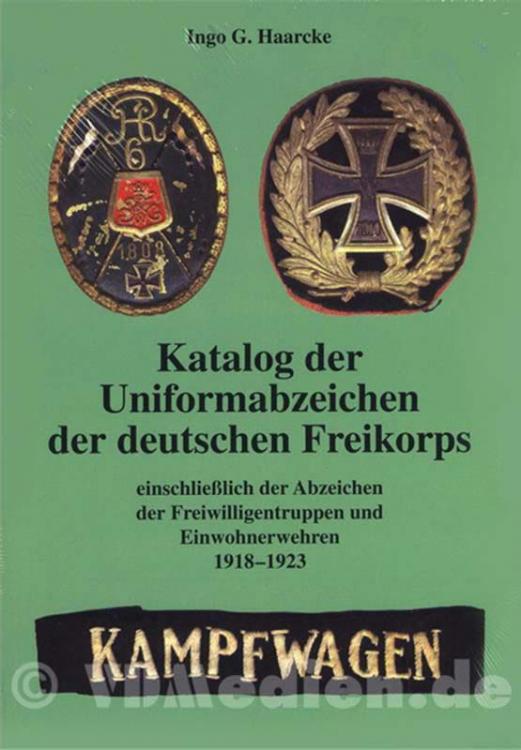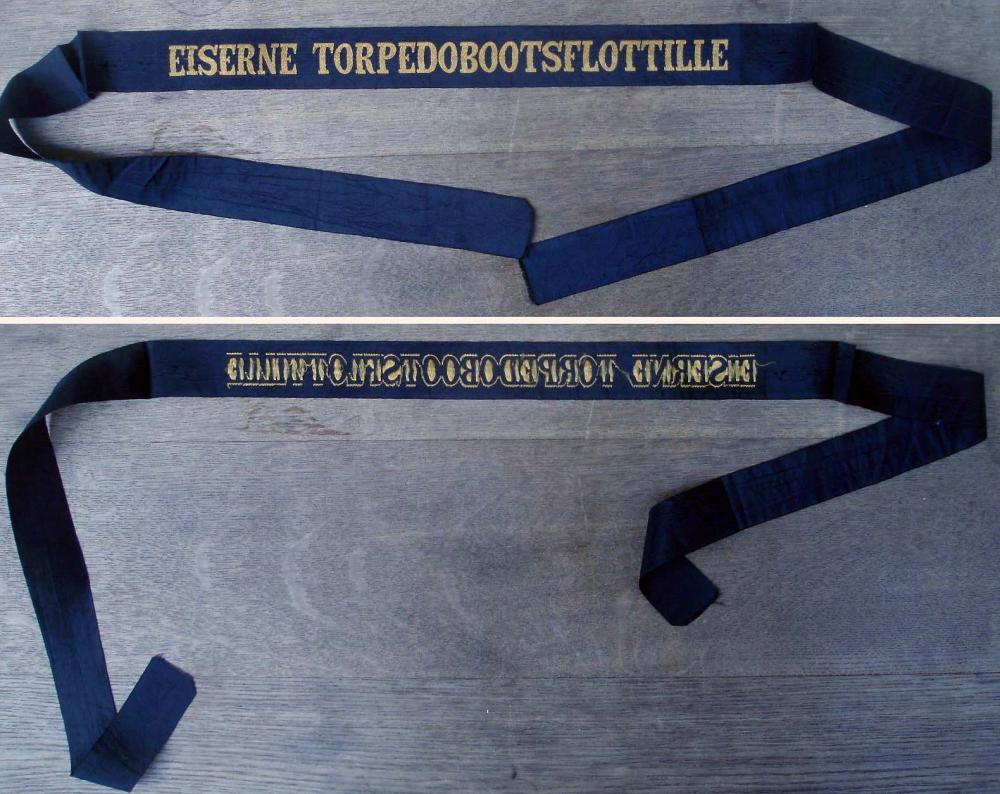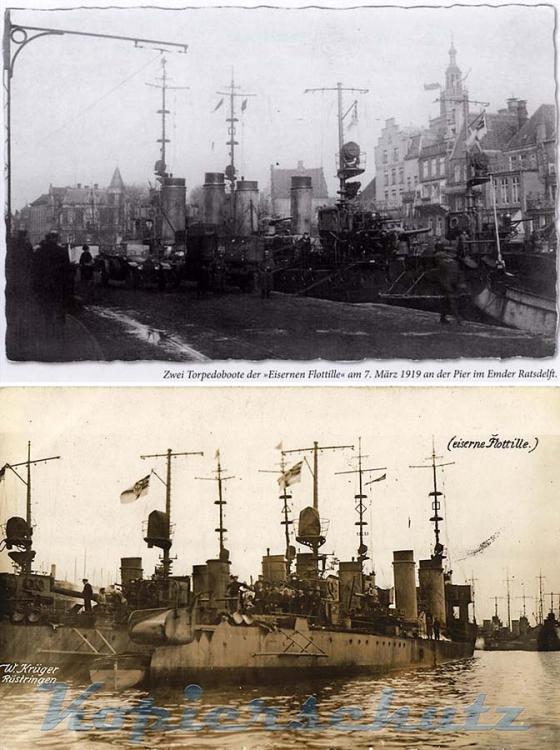
bolewts58
Active Contributor-
Posts
624 -
Joined
-
Last visited
-
Days Won
11
Content Type
Profiles
Forums
Blogs
Gallery
Events
Store
Everything posted by bolewts58
-
Freikorps Epp Badges
bolewts58 replied to Chris Boonzaier's topic in Germany: Weimar Republic & Deutsche Freikorps
As mentioned, the green piping denoted an original volunteer. There was also green/gold twisted piping for original officer volunteers and gold piping for other officers who were not original volunteers. The piping was added when Freikorps Epp became Reichswehr Brigade 21 in the Übergangsheer. FYI, the elongated badge I showed came with photos (one shown) and the Militärpass of Unteroffizier Wilhelm Forch who served in Königlich Bayerisches 1. Infanterie-Regiment „König“ during the war and then after was in Bayerisches Schützenkorps/Freikorps Epp through to service in the Reichswehr. -
Freikorps Epp Badges
bolewts58 replied to Chris Boonzaier's topic in Germany: Weimar Republic & Deutsche Freikorps
There was no one distinct size and you find widely varying shapes from elongated diamonds to square diamonds. In terms of material, there are diamonds in black velvet and black wool. When worn as a tradition badge by the SA, you also find light blue and red diamonds. I believe the elongated plain, black diamonds are the most official version. Here are two I own. As you can see, there are quite different. The smaller square diamond has the green cord the denoting an original volunteer from March 1919 when the Freikorps was formed in Ohrdruf. The larger elongated diamond is black velvet and is 9 x 5.5 cm. The smaller square one with green cord is black wool and is 6.2 x 5.7 cm. -
I just picked up this small document grouping to an early Freikorps fighter which includes his Militärpass, Wound Badge doc and scarce Freikorps "Noske" Ausweis. Karl Drewes was recruited into Oldenburg Infantry Regt. 91 on 15.3.16 and transferred to 1. Hannover Inf. Regt. 74 on 24.9.16 and saw most of his WWI action in this unit, including in the 3. Machinegun Company of the regiment from late 1917. He spent most of the war from mid-1916 in the thick of it on the Western Front including fighting at Champagne, Verdun, Hohe 344 and the 1918 Spring Offensive. He received the EKII on 27.1.18, the Black Wound badge on 26.9.18 and was briefly in hospital in Oct. 1918. He was briefly attached to the staff of Artillery Regt. 275 in September 1918. He left hospital sometime in October and managed to finish the war back on the front line. When 1. Hannover Inf. Regt. 74 demobilized in December 1918, he volunteered with others from the regiment for the Freikorps and joined the Freiwilliges Landesschützenkorps on 18.12.18. Generally, Freikorps passes are hard to come by. But, what's particularly scarce about this grouping is that his pass has entries for the very first Freikorps actions in early 1919. As part of Landesschützen Batl. 7 (aka Abteilung 7), Drewes was in 3. Landesschützen-Brigade "Gerstenberg" commanded by Oberst (later Generalmajor) Wilhelm Gerstenberg. As part of Landesschützen-Brigade "Gerstenberg", Drewes fought against the Spartacists in Berlin from 3.1.- 24.1.19, the communists in Bremen from 4.2.-22.2.19, in the Ruhr region from 6.3-6.6.19 and in Remscheid from 7.6.-15.6.19. He left service immediately afterwards, when the Freiwilliges Landesschützenkorps became Reichswehr-Brigade 4 in late June 1919. He would have been entitled to the Eiserner Roland des Bremer Bürgerausschusses. Although, as far as I can see in the pass, there's no mention of it. The "Noske Ausweis" was issued in Spring 1919 by Gustav Noske, first Minister of Defense of the Weimar Republic to all Freikorps fighting against the Spartacists, the soldier and worker councils and communists who had taken over several cities in Germany from December 1918. After June 1919, there was a second Noske Ausweis (in red) issued to the newly formed Reichswehr. While not rare, the first Freikorps Noske Ausweis (in blue) is scarce or at least very hard to find as most were exchanged for the new Reichswehr Ausweis when the Freikorps transitioned to the Preliminary Reichswehr, or simply wore out and were discarded. Pictured is the document grouping and the page from the pass, detailing Drewes' Freikorps actions that includes ink stamps for Landesschützen Batl. 7. The Ausweis has remnants of what appears to be an original Noske signature in blue pencil above the photo of Drewes.
-
A couple of these bidders seem to be part of a handful of new collectors on the market that I have observed for the last few months on eBay, who are driving the prices for harder to get Imperial and Freikorps photos and documents to insane heights. The common element is that they seem to all have more money than sense.
-
I have strong doubts that this is genuine. The fact you bought it on eBay reinforces this opinion. The infamous "Club" and its various alter-egos dole these out sparingly on eBay, in order the avoid raising alarms. There's also a seller called Porre81 who sells these and most of his items are fake. Except for eBay, I have never seen this cross before, anywhere and I've been collecting Imperial for over 50 years. It could well be a fantasy piece.
-
Schlesischer Adler / Silesian Eagles
bolewts58 replied to dond's topic in Germany: Weimar Republic & Deutsche Freikorps
Being a native speaker, you should know. Thanks for the clarification. -
Schlesischer Adler / Silesian Eagles
bolewts58 replied to dond's topic in Germany: Weimar Republic & Deutsche Freikorps
Echte Auflage doesn't appear on every version of this brass type of Meybauer eagle. It could refer to a first edition or first strike of this badge.I agree. I'm sure they weren't worried about unauthorized copies. Echtgold means real gold. So, I find it odd that it would mean gold-plated. Where did you find this info? Vergoldet means gold-plated. -
Schlesischer Adler / Silesian Eagles
bolewts58 replied to dond's topic in Germany: Weimar Republic & Deutsche Freikorps
Echte Auflage means 'genuine edition', 'genuine impression' or 'genuine strike'. -
pictures from Freikorps members
bolewts58 replied to pegasus1831's topic in Germany: Weimar Republic & Deutsche Freikorps
agree. BTW, the Baltic Cross didn't come in classes. It simply was available either on a ribbon or as a breast badge and often both were worn together as is seen here. The cross for Freikorps Avaloff is actually referred to as Das Malteserkreuz der Russische-Westarmee and was a unit insignia, not an award. The Avaloff Cross is something different and was an award. -
agree. With Germany rocked by communist uprisings, worker strikes, political upheaval and foreign incursions into its territory, the advent of lots of official and unofficial bling for those loyal to and defending the status quo was politically expedient. I remember seeing a period German cartoon in which the first panel showed an angry mob of disaffected soldiers and civilians, the second panel showed a General showering the mob with various medals and awards and the third panel showing the smiling mob, wearing their new medals and marching lock-step in the opposite direction.
-
pictures from Freikorps members
bolewts58 replied to pegasus1831's topic in Germany: Weimar Republic & Deutsche Freikorps
I understand why some might mistake this for Freikorps as he's wearing oakleaf collars that look similar to many Freikorps collar badges. But, in fact, those oakleaf devices are Stahlhelm 'Wehrsport' collars. -
pictures from Freikorps members
bolewts58 replied to pegasus1831's topic in Germany: Weimar Republic & Deutsche Freikorps
The breast badge is not Freikorps, but the 13th Stahlhelmbund Annual Meeting badge for 1932, held in Berlin. The inscription in German notes that he was attending this rally. -
pictures from Freikorps members
bolewts58 replied to pegasus1831's topic in Germany: Weimar Republic & Deutsche Freikorps
The last one is not Freikorps. It's Stahlhelmbund. -
pictures from Freikorps members
bolewts58 replied to pegasus1831's topic in Germany: Weimar Republic & Deutsche Freikorps
Nice photos. Top to Bottom: Detachment von Randow Merit Cross I cl., Baltic Cross Defence Badge of the V Army Corps, Silesian Eagle I cl. Detachment von Neufville (Guard star collar badges), von Neufville Merit Cross I cl. Freikorps Epp -
Freikorps is a bit of a minefield these days as interest has increased dramatically in the last couple of years. As a result, there are many more high quality fakes on the market. As someone who has collected Freikorps since the late 60s, I would say that there really isn't a totally legitimate source for genuine FK items. Even dealers who are considered to be more or less reputable sell fakes (knowingly or unknowingly). Educating yourself through reference books, reading through forums and asking questions about pieces you are considering buying is really the only way you will be able to build your knowledge and collect. While there are many novice collectors on the scene now, there are relatively few knowledgeable collectors around and most of those post on forums. Also, the best reference books are in German and Russian. So, unless you can read those languages, you'll need help translating them for information. The first book you should buy is Das Buch vom deutschen Freikorpskämpfer by Ernst von Salomon. An original 1938 edition will run about 250-300 EUR, if you can find one. But, there are reprints available on Amazon, Abebooks etc. for around 50 EUR. For Freikorps insignia, the best book is Katalog der Uniformabzeichen der deutschen Freikorps by Ingo Haarcke (38 EUR). There isn't a comprehensive book on all Freikorps awards. But, there are 2 very detailed volumes in Russian on Freikorps awards related to the Baltic and Silesian campaigns by Konstantin Nickolaev. But, these are only available from the author and I don't think he's printing any more at the moment. There is no dealer in the world who I would rely on. So, your best bet is to read references and consult experts on forums.
-
Freikorps Insignia
bolewts58 replied to Nick's topic in Germany: Weimar Republic & Deutsche Freikorps
Rare Freikorps naval cap tally of Die Eiserne Flotille / Eiserne Torpedobootsflotille Originally known as Die Freiwillige Nordsee-Torpedobootsflottille. Founded in Wilhelmshaven under the Generalkommando des Garde-Korps (Garde-Kavallerie-Schützen-Division, Berlin) on February 20, 1919. It was disbanded on August 3, 1920. Commanded by Korvettenkapitän Rudolf Lahs (later Reichsmarine Kontoradmiral, Vice-President of Deutschen Versuchsanstalt für Luftfahrt (DVL) and President of the Reichsverbandes der Deutschen Luftfahrt-Industrie (RDLI). Order of battle 1. Eiserne Halbflottille 2. Eiserne Halbflottille The Flotille were first stationed in Emden harbor in March, 1919 to prevent a communist uprising. The Flotille participated in the Hamburg uprising, June 1919 (known as Die Hamburger Sülzeunruhen). - The Eiserne Flotille with 8 torpedo boats blocked the Elbe and the entrance to Hamburg and provided a link between Detachments Lebedur and Heug (Reichswehr Pionier_Batl. 9). It also supported the Kapp-Luttwitz Putsch in March 1920. -
Freikorps Insignia
bolewts58 replied to Nick's topic in Germany: Weimar Republic & Deutsche Freikorps
I think it's a Baden hunt club from the 1920s and not veteran related. -
Freikorps Insignia
bolewts58 replied to Nick's topic in Germany: Weimar Republic & Deutsche Freikorps
I think it's Verband Badische Jäger. It's not Freikorps and doesn't belong on this thread. -
I saw this on eMedals. It's a beautiful award and nice to have the case. Congrats. But, the case has a GA Scharffenberg label. Yet, the cross is marked 'R' which is Alfred Rösner, Dresden. So, the cross and case were likely not originally together, unless the original recipient picked up a replacement case from GA Scharffenberg, which seems unlikely. I don't think it diminishes the value, really. Cases for this order are hard to get. But, still I wanted to point out the discrepancy.
-
As far as I know this is a Weimar Era Deutsches Reiter-Verdienstkreuz and differs from the 1969 version as the arms were pebbled and followed the familiar pattern of the iron cross as seen in the close-up and also had the letter 'R' at the base of the wreath. As with the post-45 Reiterabzeichen, the 'R' was omitted on the 1969 cross. The only one I have ever had in-hand was silver and made by Steinhauer u. Luck. But, they came in bronze, silver and gold. If you look at post 138 and 139 in this link, you'll see what appears to be a gold version of the cross. http://gmic.co.uk/topic/15277-post-your-r-reiterabzeichen-and-r-fahrerabzeichen/?page=6
-
Thanks Mike. While I accept Sergey's assessment of this cross, I'm not prepared to declare it an outright fake. At the moment, it seems to be a one-off, from what date, I don't know. I realize that it's certainly not Freikorps period. Sergey's correct that it's details match what I have called the post-1945 Rossbach-sanctioned re-issues (based on what I consider fairly valid info from a very reliable source). But, it is made of "Neusilber" (white metal alloy) rather than the usual bronze gilt seen on these post '45 crosses. So, it's a bit of a head-scratcher, at this point. I will likely try to sell it, at some point. But, I'll identify it as a later manufactured anomaly, unless some new information comes to light that definitively identifies it as a fake.



